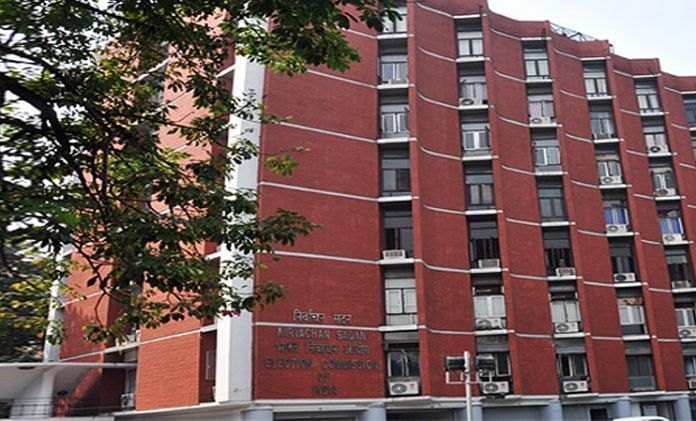Move comes ahead of 17 April Law Commission meeting that will discuss simultaneous election.
New Delhi: The law ministry has asked the Election Commission of India to examine the “feasibility” of implementing the NITI Aayog’s proposal to hold a two-phase, simultaneous elections in line with the Modi government’s ‘one nation, one election’ idea, ThePrint has learnt.
This is one of the first official indications to the ECI from the BJP-led government about moving towards simultaneous polls ahead of Lok Sabha elections due in 2019.
Sources told ThePrint that the Modi government has this week asked the EC to examine the 2017 NITI Aayog’s working paper — “Analysis of simultaneous elections: the ‘what’, ‘why’ and ‘how’” — and assess if it is feasible for implementation.
The ECI will submit its assessment within the next few days, the sources added.
The law ministry’s latest nudge to the ECI is timed rather strategically with the upcoming Law Commission meeting on 17 April, which will be discussing a proposal on simultaneous polls. An internal working paper of the commission has also, incidentally, recommended a similar two-phase model for simultaneous Lok Sabha and state assembly polls in 2019 and 2024.
What NITI Aayog suggested
A NITI Aayog note, prepared by its member Bibek Debroy and public policy analyst Kishore Desai, advocates a two-phase election as the most feasible solution. It says in Phase I, assembly and Lok Sabha polls can held in 14 states simultaneously in April-May 2019.
Phase II is suggested approximately mid-way — 30 months after Phase I, around October-November 2021. Thereafter, it is envisaged to conduct elections every 2.5 years (30 months) in the country once the entire electoral cycles of Lok Sabha and all state assemblies are synchronised by December 2021.
Under this model, Andhra Pradesh, Arunachal Pradesh, Odisha, Sikkim and Telangana are likely to end along with the tenure of the 16th Lok Sabha and go to polls with Lok Sabha while the likes of Assam state assembly whose tenure ends around June 2021 may be extended by six months to fit into the second phase: October-November 2021.
Positions taken so far
PM Narendra Modi has repeatedly called for simultaneous polls, a view echoed by both the President and Vice-President of India to underline the government’s strong support for an electoral overhaul. BJP-ruled Madhya Pradesh has also made first moves in the direction setting up a committee to look into the issue last month.
The ECI has largely been supportive of a simultaneous poll mechanism provided the related logistics can be arranged. The central government also sanctioned more than Rs 1,000 crore in December 2016 to enable the poll panel to order enough EVMs to handle a simultaneous poll scenario.
The government has argued that simultaneous polls will reduce the burden on the state and central exchequers and smoothen governance and delivery mechanism that is currently disrupted with multiple elections.
The greater challenge for the government will be on building political consensus around the radical idea which has already been opposed by many political parties. Besides questioning the operational feasibility of such an idea, many have argued that this is a politically motivated move to influence the electorate to vote on national issues even at state assembly level.
There are fears that in case of a ‘wave’ in support of a particular party, electoral results may be adversely and unduly affected across states in the event of simultaneous polls.
Any move towards simultaneous polls, however, will require political support as a constitutional amendment passed with two-thirds voting majority will be needed for reduction of the tenure of some state assemblies and extension of others as well to fit into a simultaneous poll calendar.






